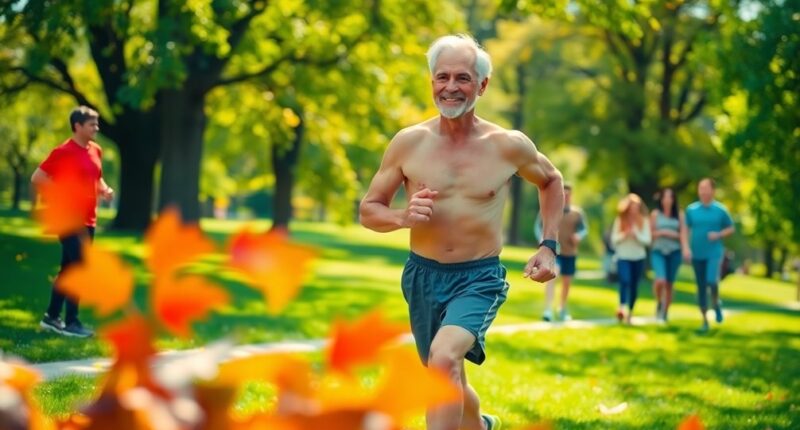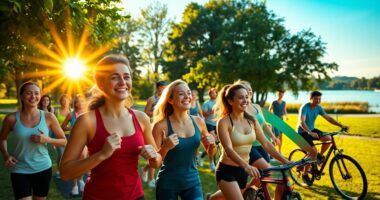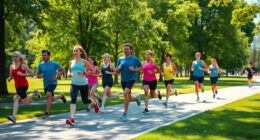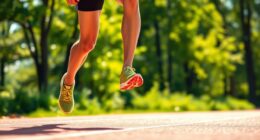At 60 years old, you might wonder how this runner maintains a VO2 max comparable to college athletes. It comes down to consistent training and dedication. With a typical decline of 10% in VO2 max per decade, this runner mitigates age-related drops through regular aerobic workouts and strength training. Factors like preserved muscle mass and cardiovascular efficiency play a crucial role, offering insight into longevity and performance. Discover more about the secrets behind this impressive feat.
Key Takeaways
- The runner's consistent aerobic training significantly mitigates age-related decline in VO2 max, maintaining high fitness levels.
- Engaging in both low and high-intensity workouts enhances cardiovascular efficiency and overall performance.
- Preservation of muscle mass through strength training contributes to endurance and combats aging effects.
- Regular VO2 max testing allows for personalized training programs, optimizing performance and pushing fitness boundaries.
- Active engagement in aerobic activities reduces the risk of chronic diseases and improves overall quality of life.
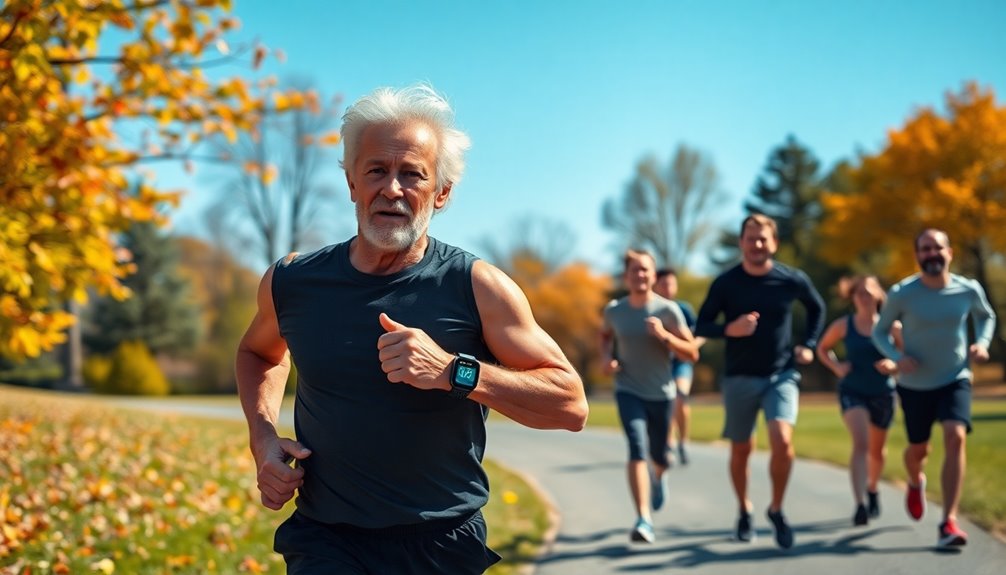
At 60 years old, you might be surprised to learn that a dedicated runner can maintain a VO2 max of 44.6 mL/kg/min—comparable to that of a college athlete. This impressive feat showcases the power of consistent aerobic training and an active lifestyle. While it's typical for VO2 max to decline by about 10% per decade after age 25, dedicated runners often manage to mitigate this decline significantly. If you're committed to regular training, you might only lose about 5% per decade, demonstrating that age doesn't have to dictate your fitness levels.
So, what’s the secret behind this remarkable endurance? It primarily lies in the maintenance of muscle mass and the engagement in both low and high-intensity workouts. By focusing on these aspects, you not only enhance your cardiovascular efficiency but also fortify your body against the effects of aging. In fact, many athletes cite their last place marathon experience as a pivotal moment, teaching them the importance of resilience and consistent training. This journey reinforces the idea that endurance is not solely about competition but about personal growth and commitment to health. By consistently prioritizing muscle maintenance and diverse workout intensity, individuals can cultivate an enduring stamina that far surpasses any fleeting race results.
Endurance athletes who prioritize varied workouts tend to enjoy better overall fitness and longevity. This proactive approach can lead to substantial health benefits, including a reduced risk of chronic diseases such as cardiovascular issues and even dementia. In addition to physical advantages, many athletes also experience the mental benefits of running, such as improved mood and reduced anxiety levels. Engaging in diverse training routines not only keeps workouts interesting but also enhances cognitive function, contributing to better focus and mental clarity. By incorporating various exercises into their regimen, endurance athletes not only bolster their physical resilience but also foster a healthier mind.
Regular testing of your VO2 max is also crucial. It's not just about running; it's about understanding your body's capabilities and limitations. Tailored training programs based on these assessments can empower you to maintain impressive aerobic capacities throughout your later years.
By monitoring your progress, you can adjust your routines to optimize performance and keep pushing your boundaries. Moreover, maintaining a high VO2 max is linked to better longevity. You may find that staying active and engaged in aerobic training not only prolongs your life but enhances its quality.
The combination of a strong cardiovascular system and preserved muscle mass works wonders in staving off many age-related ailments. As you continue to challenge yourself, you'll likely discover that your body is more resilient than you think.
Conclusion
Incredible as it may seem, this 60-year-old runner defies the odds with a VO2 max that rivals college athletes. While doctors scratch their heads, his dedication to training, nutrition, and perhaps a sprinkle of genetics play a crucial role. It's a testament to what's possible when you prioritize fitness and health at any age. So, if you're looking for inspiration, look no further—this runner proves that age is just a number when it comes to endurance and vitality.
